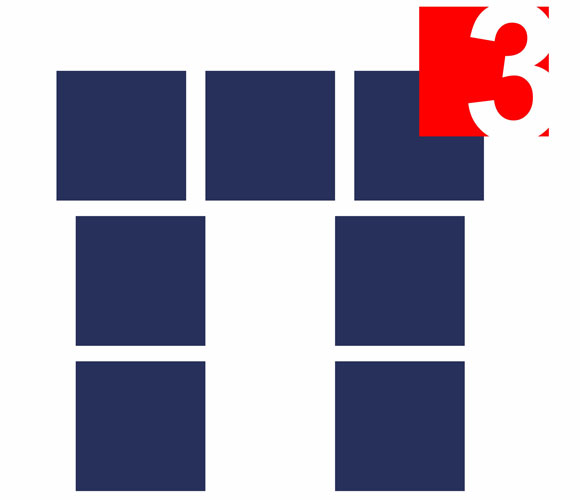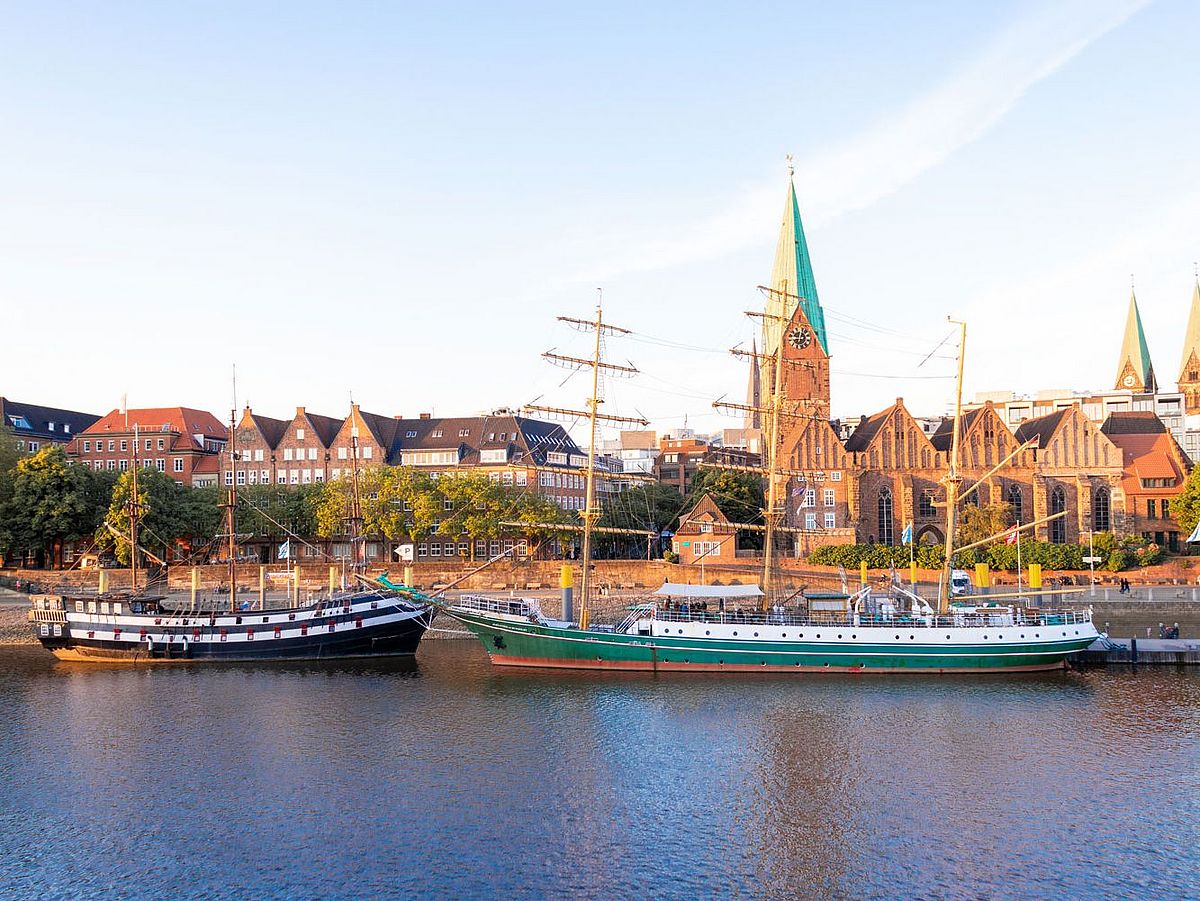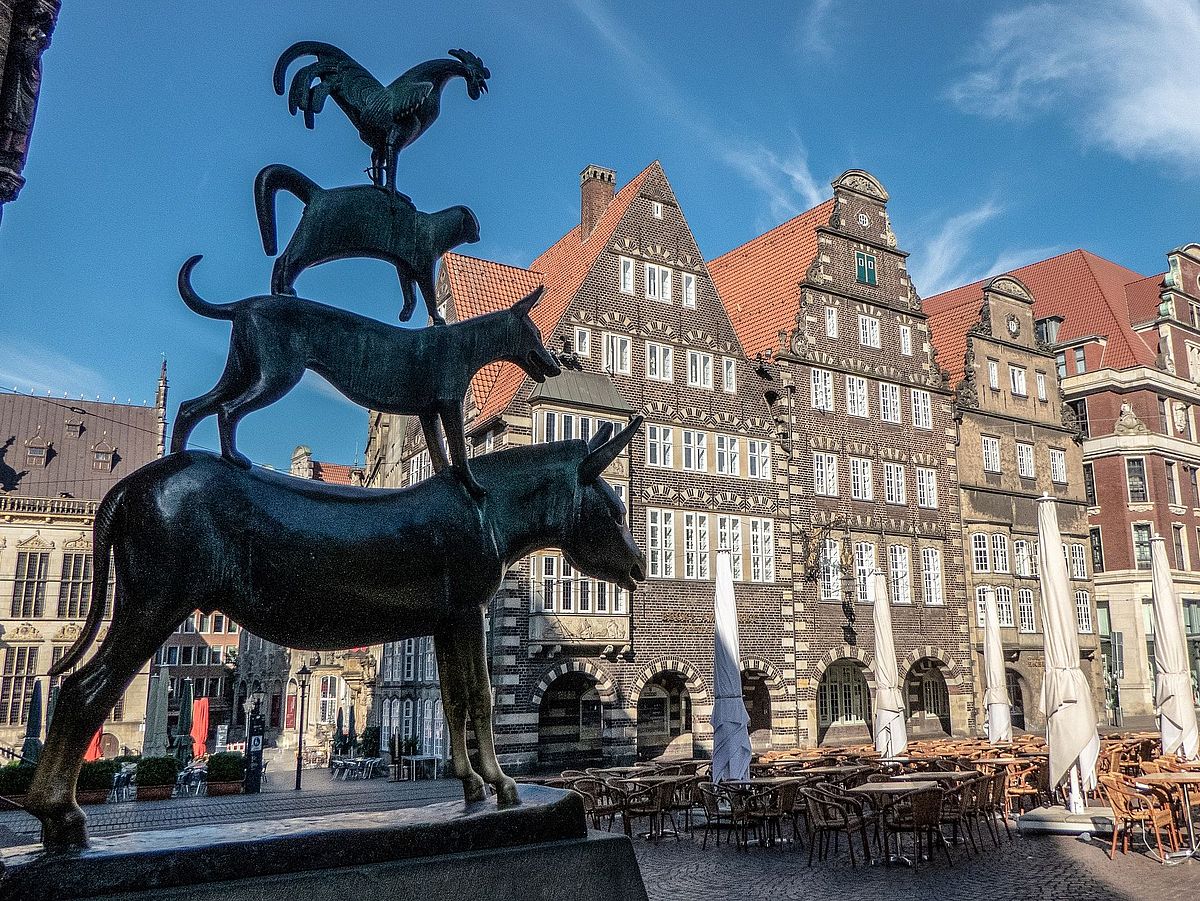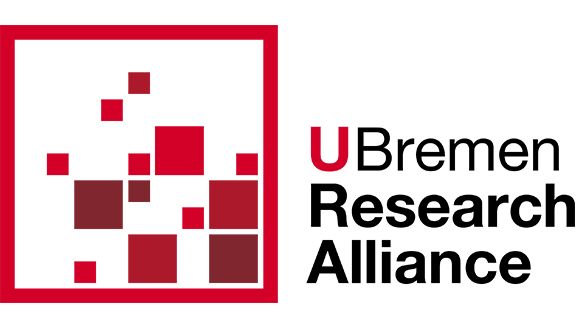Environment
Applied mathematics in Bremen is characterized by its diversity and interdisciplinarity. Diversity through various applied research areas (optimization, algebra, statistics, inverse problems, machine learning, data analysis), which are located at the border between university and industrial research. Interdisciplinarity due to the various cooperations with regional and international companies (VW, Hella, IAV, Siemens, Bruker, EWE, ArcelorMittal, Airbus).
Applied mathematics in Bremen has set itself the goal of mastering the transfer of current research knowledge to the region and allowing students to participate in it at an early stage. For this transfer, it is necessary to introduce students to concrete research projects and application scenarios from practice. At the Center for Industrial Mathematics, this is done, for example, by collecting, evaluating and analyzing data on an industrial robot, several flight simulators and a completely networked research farm with its own wind turbine and PV system. A particularly prominent example is the autonomous driving within the OPA³L project: a research vehicle that is allowed to participate in regular road traffic in the region.
Spin-offs are another success factor in application-oriented mathematics. For example, SCiLS GmbH for Imaging Mass Spectrometry was founded several years ago. Against the background of parameter identification problems, the presentation and analysis of medical data opens up new horizons in pharmaceutical, medical and industrial research. The goal of TOPA³S gGmbH (to be founded in autumn 2020) is to deal with the automated generation of digital twins of complex technical systems and to provide a software product based on methods that are investigated in this RTG, among others, and which is to combine user-friendliness with highly efficient algorithms.
City of Bremen
Bremen not only offers an excellent environment for working, but also for living. It is most famous for its Town Musicians, the town hall or the football club Werder Bremen. Museums, theatres or the classical orchestra, but also events such as a street circus festival invite you to cultural activities. Warm summer evenings invite you to stroll along the Schlachte or to immerse yourself in the pulsating nightlife. In winter a visit to one of the most famous Christmas markets in Europe is obligatory. Due to the nearby North Sea, there are numerous other excursion possibilities. But also in the immediate vicinity of the city-state of Bremen there are for example the “Teufelsmoor” (devil’s bog) or the world-famous artist villages Worpswede and Fischerhude, which invite you to explore them by canoe or bicycle. The student’s semester ticket also includes free train rides to Hamburg, various national parks, and the North Sea. What is less known is that Bremen also has a rich mathematical history. Curious people can therefore follow the Gauss points through Bremen or, which is easier, attend the mathematical city tour, an informative and entertaining guided tour.
The transfer of knowledge and technology at University of Bremen and within π3 is always research-based and it embraces cooperation and dialogue with all key players outside of science. We work closely together with the transfer office of the University of Bremen UniTransfer.
Excellent Research Cooperations
Interdisciplinary research is a top priority at the University of Bremen. It focuses on six key scientific areas that largely define the research profile of the University, while at the same time reflecting core fields of innovation for the Federal State of Bremen itself. The mathematics department and members of π3 work e.g. closely together with the engineers of MAPEX (Materials Sciences and Technologies) as well as with experts from computer science and robotics in MMM (Minds Media Machines).
In addition, collaborative research within the framework of Collaborative Research Centers (CRS, DFG funded) at the University of Bremen is very important. The Department of Mathematics and members of π3 are involved here, in the CRC SFB1232 - Farbige Zustände for example with experts from Process Engineering or in (AC)3 with the Institute of Environmental Physics of the University of Bremen.
Cooperation with non-university research institutions also plays a major role in scientific exchange. Cooperations with Alfred-Wegener-Institute Helmholtz Center for Polar and Marine Research (AWI) has recently reached a new level due to four joint PhD projects as part of the MarDATA initiative, which aims at educating the next generation of marine data scientists. The Fraunhofer Institute for Digital Medicine, Leibniz-Institute for Prevention Research and Epidemiology (BIPS) and Leibniz Institute for Materials Engineering IWT are further cooperation partners for the PIs of π3 in several national and international research projects.








